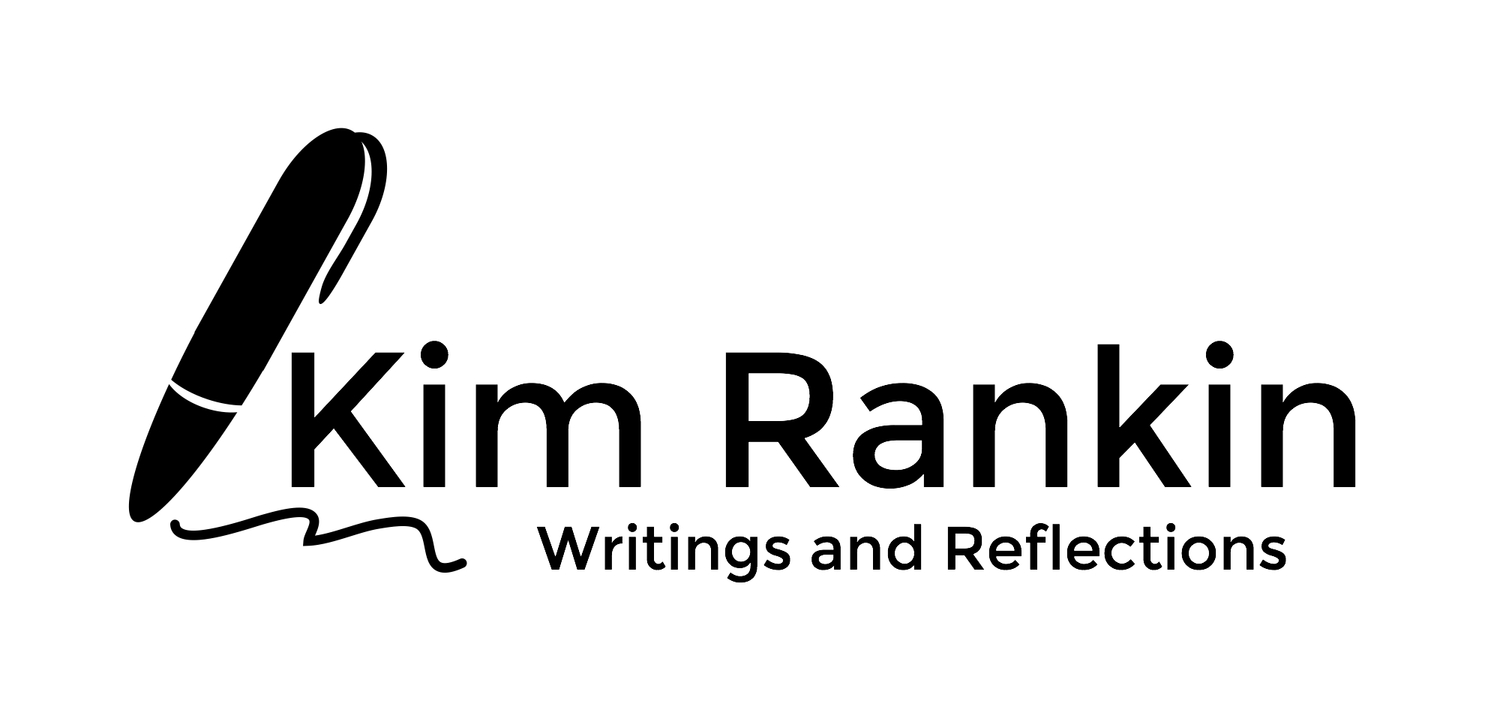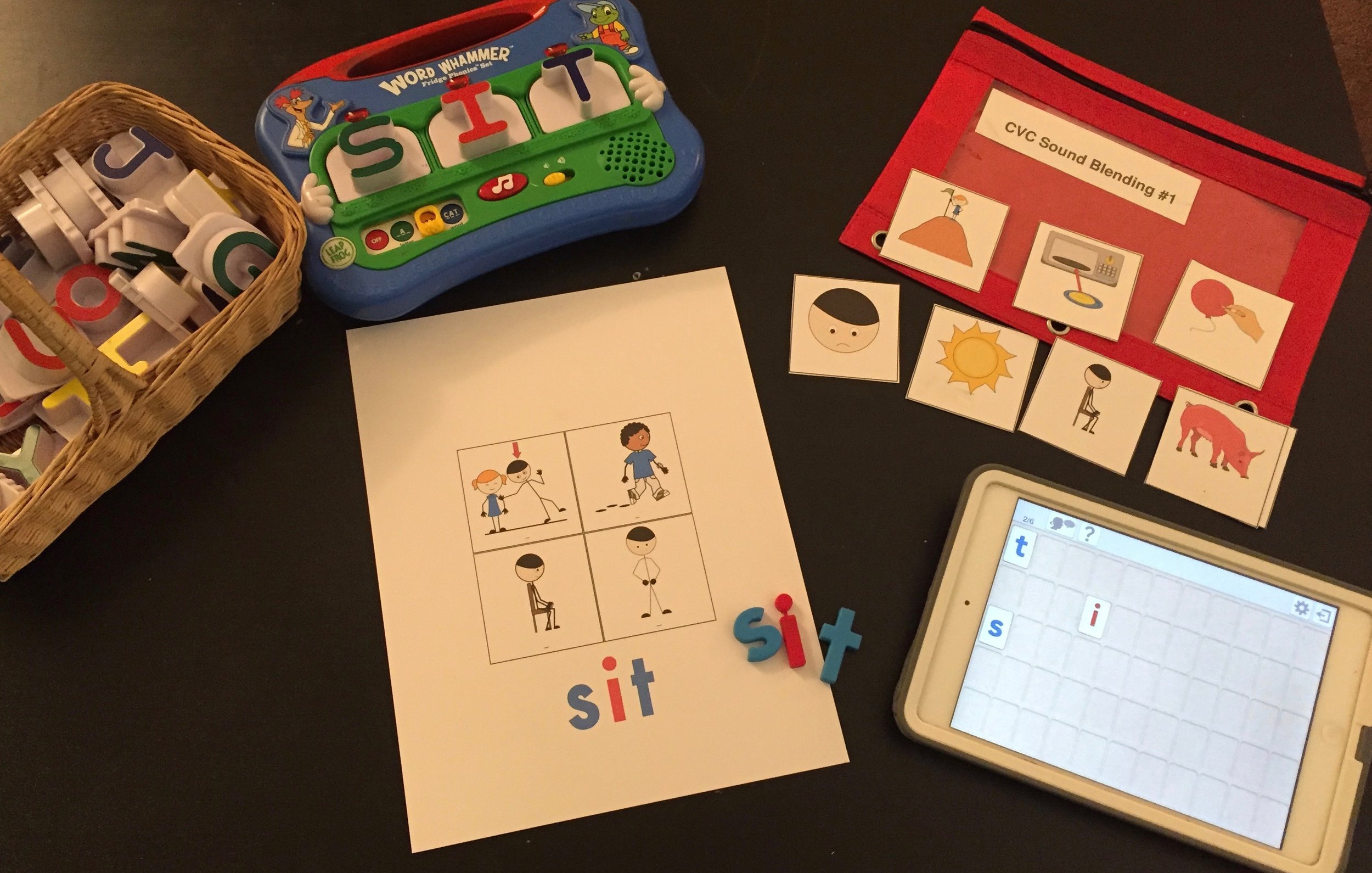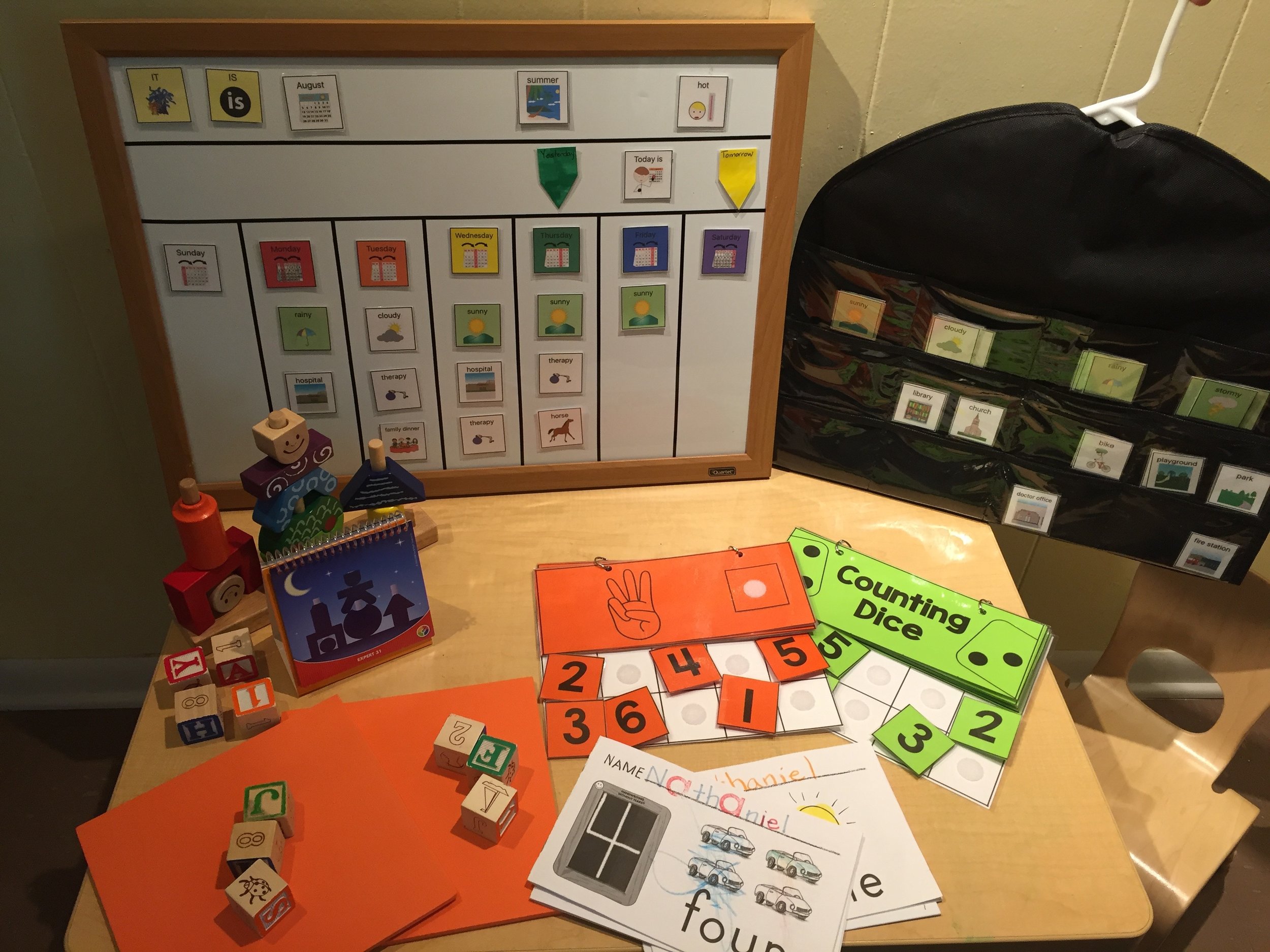My AAC Immersion Kindergarten: Week 5
Nathaniel's medical conditions stole time from being a student this week. He has recently experienced some complications with his trach stoma, and we think he might have a respiratory infection. Thankfully, we've managed at home, which is a huge improvement for this kid who used to need ICU support for minor viruses. But we've been to the doctor a number of times and have added additional treatments to our routine. He hasn't been sleeping well, which means I haven't slept well.
Wednesday of this week, I calculated Nathaniel's attendance for the lessons I have planned so far. Not including the three therapies he attends weekly away from home, he's missed eighteen percent of our school time at home for regular or illness related medical appointments. Eighteen percent absenteeism in the first month of school is a lot. Most public schools caution that achievement suffers when absences surpass five percent. I am thankful that homeschooling offers the flexibility to squeeze learning in when we can. But I had to drop a number of things I had hoped to accomplish this week and slow our pace. It is discouraging as a mom and teacher that Nathaniel's health causes such an interruption in his learning. Here are some snippets of what we enjoyed when his health allowed:
AAC Core Words of the Week:
My primary goal with these posts about teaching Nathaniel at home is to share how I am incorporating AAC immersion into our daily lessons. I use PrACCtical AAC's Core Word of the Month twelve word list. I focus on four words each week. Our words for this week were: JOB, TOGETHER, DAY, SORRY. These were hard words to incorporate into our conversations, learning, and play. All are located on second screens of Nathaniel's communication app, Speak for Yourself, which meant learning the motor plans for each word took more effort than if they were home screen words.
Week's Theme: Work and Leaves
Most homeschool curriculum is written for thirty-four to thirty-six weeks of school. Since we school year around, I merge various resources to fill our year. Every four weeks or so, we will focus on something character related. The theme of work came from the curriculum guide, Myself and Others Book 1: Lessons for Social Understanding, Habits, and Manners.
Literature:
We read two books daily this week. The first was The Little Red Hen. We used a version of the The Little Red Hen that we owned and is currently out of print, but I like Paul Galdone's a lot. I worked on this week's core words by modeling these phrases while reading the story:
- Do JOB!
- SORRY, not I.
- Do JOB TOGETHER.
- (Hen) works at JOB.
- Do JOB in DAY, not (night).
- SORRY not this DAY.
- No JOB this DAY.
- Pig not do JOB.
- Hen and Duck not work TOGETHER.
- I not do the JOB TOGETHER with you.
- I not like that JOB.
The second book we read daily was Leaves! Leaves! Leaves! by Nancy Elizabeth Wallace. There are hundreds of books on leaves for children. What struck me about this title was the quality science information provided in a simple story and with uncomplicated illustrations. I also like that the little bear, Buddy, is learning from his mother. Sweet. They enjoy seasonal leaf walks, which I hope to do with Nathaniel this year.
Science:
I had planned a nature walk at a park this week, but we only had time to collect leaves in our yard. Nathaniel quickly identified each tree by matching the real leaves to these beautiful illustrations from the Arbor Day Foundation website. He also enjoyed a new tree puzzle. The small knobs required him to work on his pincer grasp, which is an OT goal.
He asked for the fringe words trunk, branch, and root to be opened on his talker by pointing to the puzzle pieces and then looking for the words where he assumed them to be - with other outside nature things like flower and dirt. Perfect example of how Nathaniel demonstrates his understanding of the language categorizing on his device, and how he contributes to selecting what words to open. Phrases we worked on while doing the puzzle and identifying leaves included:
- They go TOGETHER.
- They are (the) same.
- Finding (the) same is (your) JOB.
- Put it TOGETHER.
- I do (the) JOB.
- You can do (the) JOB.
- We do it "TOGETHER.
- It goes TOGETHER now!
- This JOB is not good.
Nathaniel's Uncle Ed made me the beautiful bronze leaf plaque shown in the photo above. We tried to make our own with salt dough. The AAC phrases we worked on during that two day process can be found at my August AAC Cord Word Activities: Week 1 post.
Language Lessons:
We have covered four letters so far this year. At the end of last week, I was not confident that Nathaniel could quickly identify the letter sound correspondence for each phoneme. With the interruptions of medical appointments this week, I decided to pause moving on to a new letter and worked with the four we have already completed a bit more.
We rotate through letter sound correspondence activities with the materials shown above. Nathaniel indicates that he knows the phoneme I say by selecting it from magnet letters, letter cards, or upper and lower case puzzles. I mentioned before that Jolly Phonics includes a gross motor sign for each phoneme. I love that component! When shown a letter, Nathaniel can demonstrate he knows it by saying it with the sign or saying it with his device. We worked on finding each letter on a keyboard within his communication app, a desktop keyboard, and in print. I am confident he knows all four letter sound correspondences now.
We practiced sound blending with picture cards of consonant vowel consonant words. I created cards that fit this pattern using words and symbols he has on his device. Nathaniel listened as I orally presented the sounds of a word slowly. He then blended these sounds together in his head, and indicated the right word by touching the picture card or the word on his device. This week, he touched the card from a field of two choices, and I modeled the word using his device. It is important to me to use words he has available and knows on his device for these exercises so he is not tasked with learning new motor plans to give an answer.
We worked very briefly on decoding with picture cards and magnet letters. Again, I made my own resource using words and symbols that match his device. I slid my finger under each letter as I said the phoneme aloud slowly blending them. I explained that in order to read, Nathaniel will need to do this part in his head. Nathaniel indicated the correct picture by pointing, and then he wrote the word with the magnet letters. Eventually, I will eliminate my oral part of sounding out the word for him.
We tend to not use much screen based learning, but the app Word Wizard allows me to create my own word lists for various phoneme activities. The app also gives Nathaniel the opportunity to practice blending individual letter sounds into words. The app generates the audible phoneme when he touches each letter tile. I like that I can limit the words we work on to just what we've learned so far. Lastly, our two decade old Leap Frog Word Whammer toy also gives opportunity for sound blending and decoding.
We continue to work on writing in multiple ways. The actual fine motor mechanics of handwriting is accomplished through our occupational therapy sessions, the homework the therapist gives, and Handwriting Without Tears materials. It is hard for Nathaniel to make his hands do what they should. He is learning about work ethic and perseverance while also working on handwriting - two skills that will pay off for a lifetime. "This is a hard JOB," and "Do this JOB," were two phrases I modeled while working on our handwriting.
Because handwriting is hard, I have provided magnet letters and letter stamps for him to demonstrate his ability to write his name. He is doing better with getting the letters in the correct order.
Lastly by using predicable chart writing, we compose stories as a family, a little bit of creative writing. I strive to incorporate our core words in this repeated sentence. Our story this week, Our Jobs, was prompted by our visit to our daughter's last weekend and the work they are doing on their home. Nathaniel contributed the word "good" for his sentence, "I do a good job." He then said, "Dinosaur. Can I have a turn?" Out of context of our shared experience, it doesn't make sense. But he was reminding me of the good job he did sharing a dinosaur at therapy this week. It was wonderful that our predictable chart writing was the catalyst for story telling of a past event using his AAC device. Telling a story of a past experience is a standard for Missouri kindergartners. At the end of a hard week, that was nice to see.
Math:
I did not take many pictures of Nathaniel working this week, so these photos of our tools hopefully gives a peek into our time together. I mixed up the page order on his finger count book and added a new counting book based on dice. I found the time we spent doing our Day and Night puzzle and our calendar time as the easiest opportunities to model our core words this week. Phrases that were repeated daily were:
- The DAY is....
- It is DAY; it is night.
- Do the JOB now.
The Usborne book titles, A Sunny Day, A Windy Day, and A Rainy Day fit well into our calendar time. There is not a repeated line written into the story, but it was easy to model, "It is (a) _______ DAY," a few times as you read each book. This set from Usborne includes a book about a snowy day which we didn't read this week.
In the photo above, peek at our white board magnet calendar to see how I incorporate Nathaniel's AAC device symbols into our math time. A cloth hanging jewelry organizer is perfect for storing our extra weather and weekly activity symbol cards.
Other Books We Enjoyed this Week:
Busy Builders, Busy Week! by Jean Reidy. A super energetic book that includes trucks, building rhyme, and lots of command statements. And of course a review of the days of the week.
Amazing Animal Alphabet by Brian Wiidsmith. Nice big pictures of an animal for each letter provides some phoneme awareness and science learning.
Rooster's Off to See the World by Eric Carle. I introduced Nathaniel to the globe and continents last week. This counting book builds on that with rooster repeatedly talking about going to see the world. AAC core word phrases that can be worked on with this title include: "Can we come," and "go see."
Will You Help Doug Find His Dog? by Jane Caston. Super fun book that is more than a story. The reader participates in finding Doug's dog by tickling, kissing, patting, and shaking the book. There is a lot of AAC core word opportunities here. Words FIND, WHAT, LOOK and BIG are repeated. The phrase, "Will you help," can be incorporated frequently. Talking about the reading experience afterward allows opportunity to review present participle verb endings.
Thanks for sharing our week! I leave you with a photo of Nathaniel at his equine based weekly speech therapy. His therapist is incorporating his device into the JOB of scooping poop from the arena after they were finished riding. Nathaniel has been blessed over the years with fantastic AAC focused speech therapists; Miss S and these very busy sessions are what he needs now. They are a wonderful example of how diverse AAC therapy can be.














